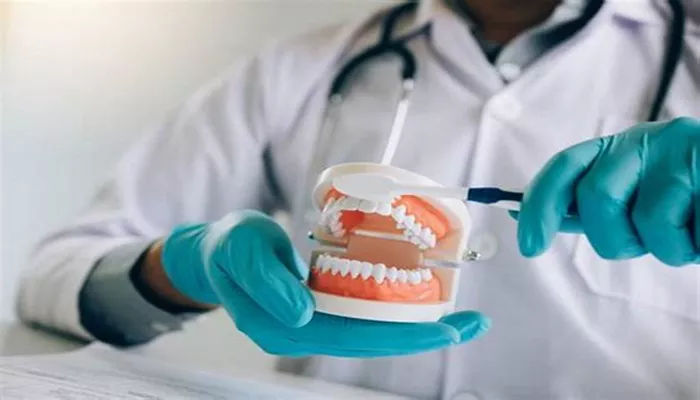Periodontal disease, also known as gum disease, is a common oral health issue that affects many people worldwide. It is an inflammatory condition that affects the gums and surrounding tissues, potentially leading to tooth loss and other severe health problems if left untreated. Choosing the right toothpaste for periodontal disease can be crucial in managing its symptoms and preventing further progression.
Understanding Periodontal Disease
Periodontal disease is primarily caused by the accumulation of plaque, a sticky film of bacteria that forms on the teeth and gums. If not removed through regular brushing and flossing, plaque can harden into tartar, providing a surface for more bacteria to grow. This bacterial build-up can irritate and inflame the gums, leading to gingivitis, the mildest form of periodontal disease. If gingivitis is not treated, it can progress to periodontitis, a more severe form of gum disease that affects the bones and tissues that support the teeth.
Symptoms of periodontal disease can include red, swollen, and tender gums, bleeding when brushing or flossing, persistent bad breath, and tooth sensitivity. Advanced periodontal disease may lead to tooth loss, as the bones and tissues that support the teeth become damaged and unable to hold them in place.
Choosing the Right Toothpaste
When it comes to toothpaste for periodontal disease, there are several options available, each with its own benefits and drawbacks. Here are some considerations to help you choose the right toothpaste for your needs:
Antimicrobial Toothpaste
Antimicrobial toothpaste contains ingredients that can help reduce the number of bacteria in the mouth. These toothpastes are often recommended for people with periodontal disease because they can help control the bacterial infection that is a key factor in its progression. Look for toothpastes with ingredients like triclosan, chlorhexidine, or zinc citrate, which have been shown to have antimicrobial properties.
However, it’s important to note that antimicrobial toothpaste should not be used as a substitute for professional dental care.
While they can help manage symptoms, they do not cure periodontal disease. Regular dental check-ups and cleanings are still necessary to maintain oral health.
Fluoride Toothpaste
Fluoride is a mineral that helps strengthen tooth enamel, making it more resistant to acid attacks from plaque and bacteria.
Fluoride toothpaste is beneficial for preventing cavities and can also help reduce sensitivity in teeth with exposed dentin.
While fluoride toothpaste is generally safe for use, it may not be suitable for everyone. People with sensitive teeth or those who are allergic to fluoride should avoid using it. Additionally, children younger than six should use a smaller amount of fluoride toothpaste to prevent ingestion.
Desensitizing Toothpaste
Desensitizing toothpaste is designed to reduce tooth sensitivity, which is a common symptom of periodontal disease. These toothpastes contain ingredients like potassium nitrate or strontium chloride, which can help block the pain signals sent to the nerves in the teeth.
While desensitizing toothpaste can provide temporary relief from sensitivity, it does not address the underlying cause of periodontal disease. It should be used in conjunction with other treatments, such as regular dental cleanings and scaling, to manage the disease.
Whitening Toothpaste
While whitening toothpaste may not directly address periodontal disease, it can help improve the appearance of teeth that have become stained or discolored due to plaque and tartar buildup. Look for toothpastes with ingredients like hydrogen peroxide or carbamide peroxide, which can help remove surface stains.
However, it’s important to note that whitening toothpaste may not be suitable for everyone. People with sensitive teeth or those who have undergone recent dental treatments should consult with a dentist before using whitening toothpaste.
Additional Tips for Managing Periodontal Disease
While choosing the right toothpaste is important, it is not the only factor in managing periodontal disease. Here are some additional tips to help you maintain oral health:
Brush and Floss Regularly: Brush your teeth at least twice a day with fluoride toothpaste, and floss daily to remove plaque and food particles from between teeth.
Use an Antimicrobial Rinse: Antimicrobial rinses can help reduce the number of bacteria in the mouth and complement the effects of antimicrobial toothpaste.
Eat a Healthy Diet: A balanced diet that includes plenty of fruits, vegetables, and lean proteins can help maintain oral health. Avoid sugary snacks and drinks, which can feed bacteria and contribute to plaque buildup.
Quit Smoking: Smoking is a major risk factor for periodontal disease. If you smoke, quitting can help improve your oral health and reduce your risk of developing gum disease.
Regular Dental Check-ups: Visit your dentist regularly for check-ups and cleanings. Early diagnosis and treatment can help prevent periodontal disease from progressing to more severe stages.
Conclusion
Choosing the right toothpaste for periodontal disease can be a crucial part of managing its symptoms and preventing further progression. Antimicrobial toothpaste, fluoride toothpaste, desensitizing toothpaste, and whitening toothpaste are all options that can help improve oral health. However, it’s important to remember that toothpaste is not a substitute for professional dental care. Regular dental check-ups and cleanings, along with a healthy diet and good oral hygiene habits, are essential for maintaining oral health and preventing periodontal disease. If you have concerns about your oral health or are experiencing symptoms of periodontal disease, consult with a dentist for personalized advice and treatment options.
Related topics:

